World War II
 When Hitler began his reign of terror, he fully expected that he would meet with little resistance from the people he was attempting to control, but that really never turned out to be the case. Even some of those who aligned themselves with him at first, rebelled later. Hitler found that out when, on November 18, 1940, he met with Italian Foreign Minister Galeazzo Ciano over Mussolini’s disastrous invasion of Greece.
When Hitler began his reign of terror, he fully expected that he would meet with little resistance from the people he was attempting to control, but that really never turned out to be the case. Even some of those who aligned themselves with him at first, rebelled later. Hitler found that out when, on November 18, 1940, he met with Italian Foreign Minister Galeazzo Ciano over Mussolini’s disastrous invasion of Greece.
Mussolini had led Hitler to believe that he had no intention of attempting to invade Greece. Then, he surprised everyone with a attempted invasion of Greece. Even his ally…Hitler, was caught off guard, since Mussolini had led Hitler to believe he had no such intention. Even Mussolini’s own chief of army staff only found out about the invasion after the fact!!
Mussolini was warned against trying to invade Greece. Everyone around him knew that the Greek people were determined to hold onto their freedom, and that the Italian Army was woefully unprepared for such an attack. Even his own generals warned of a lack of preparedness on the part of his military. Nevertheless, and despite the fact that it would mean getting bogged down in a mountainous country during the rainy season against an army willing to fight tooth and nail to defend its autonomy, Mussolini moved ahead mostly out of sheer arrogance, convinced he could defeat the “inferior Greeks” in a matter of days. He also knew a secret, that millions of Lire (The primary unit of currency in Italy, Malta, San Marino, and the Vatican City before the adoption of the Euro) had been put aside to bribe Greek politicians and generals not to resist the Italian invasion. The whole bribe idea didn’t work out too well, however. Whether the money ever made it past the Italian fascist agents delegated with the responsibility is unclear, but if it did, it clearly made no difference. The Greeks pushed the Italian invaders back into Albania after just one week. The whole operation was a miserable failure, and the Italians spent the next three months fighting for life in a fierce, defensive battle. To make matters worse, about half the Italian fleet had been crippled by a British carrier-based attack at Taranto.
A furious Hitler severely criticized Ciano at their meeting in Obersalzberg, for opening an opportunity for the British to enter Greece and establish an airbase in Athens. That put the Brits within striking distance of valuable 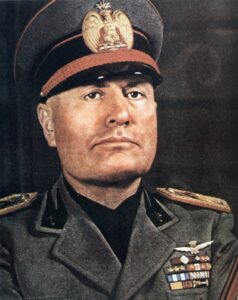 oil reserves in Romania that Hitler needed for his war machine. Hitler now had to divert forces from North Africa, a high strategic priority, to Greece in order to bail Mussolini out. He actually considered leaving the Italians to fight their own way out of the mess, and considered making peace with the Greeks as a way of forestalling an Allied intervention. Nevertheless, Germany would have to invade, in April 1941, thereby adding Greece to its list of conquests…whether Hitler wanted to or not. That put the Brits within striking distance of valuable oil reserves in Romania that Hitler needed for his war machine. Hitler now had to divert forces from North Africa, a high strategic priority, to Greece in order to bail Mussolini out. He actually considered leaving the Italians to fight their own way out of the mess, and considered making peace with the Greeks as a way of forestalling an Allied intervention. Nevertheless, Germany would have to invade, in April 1941, thereby adding Greece to its list of conquests…whether Hitler wanted to or not.
oil reserves in Romania that Hitler needed for his war machine. Hitler now had to divert forces from North Africa, a high strategic priority, to Greece in order to bail Mussolini out. He actually considered leaving the Italians to fight their own way out of the mess, and considered making peace with the Greeks as a way of forestalling an Allied intervention. Nevertheless, Germany would have to invade, in April 1941, thereby adding Greece to its list of conquests…whether Hitler wanted to or not. That put the Brits within striking distance of valuable oil reserves in Romania that Hitler needed for his war machine. Hitler now had to divert forces from North Africa, a high strategic priority, to Greece in order to bail Mussolini out. He actually considered leaving the Italians to fight their own way out of the mess, and considered making peace with the Greeks as a way of forestalling an Allied intervention. Nevertheless, Germany would have to invade, in April 1941, thereby adding Greece to its list of conquests…whether Hitler wanted to or not.
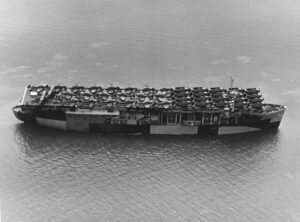 When I think of bravery, the “Woolworth Carriers” come to mind as one group of many. In the second half of World War II, the so dubbed “Woolworth Carriers” were escort carriers that were clumsy, slow, and without armor, and yet, they lead the way in dangerous waters for the American and British navies. The ships were versatile, unsung workhorses, and the men who served on them were heroes in every way. There is no way these men could have thought that they were ever safe from attack…they were a virtual target, and they knew it.
When I think of bravery, the “Woolworth Carriers” come to mind as one group of many. In the second half of World War II, the so dubbed “Woolworth Carriers” were escort carriers that were clumsy, slow, and without armor, and yet, they lead the way in dangerous waters for the American and British navies. The ships were versatile, unsung workhorses, and the men who served on them were heroes in every way. There is no way these men could have thought that they were ever safe from attack…they were a virtual target, and they knew it.
The so-called “Woolworth Carriers” shepherded convoys, hunted submarines, supported amphibious landings, and ferried men and planes in the Atlantic, the Mediterranean, the Pacific, and the Arctic at a time when U-Boats were seemingly everywhere. Although mocked as the “Woolworth Carriers,” and also called by other more “unprintable names,” the “combustible, vulnerable, and expendable” ships performed a gallant and vital role in the Allied crusade against fascist tyranny. And they did it very much unprotected.
The concept of these “Jeep” flattops and ocean-going “Model Ts” dated back to the mid-1930s. The boats were called by many names, most of them intended to be almost insulting. They were a part of a time when America, Great Britain, and Japan were investigating the possibility of converting merchant ships into small aircraft carriers. I suppose it could have been almost an innovation that had simply not seen its time yet. The idea for these ships was first initiated during World War I. As early as 1935, the United States Navy’s Bureau of Construction and Repair studied the possibility of converting 10 passenger liners for military use, and they drew up plans for taking “quick action” in the event that a war emergency created the need for such vessels. Of course, the planes of World War I were much smaller, so that part of the idea now made no sense. By 1935, the Navy was already building a powerful fleet of big flattops ships to accommodate the larger planes, so the proposals for auxiliary carriers were soon put aside. Navy Secretary Frank Knox told the United States Maritime Commission in late 1940, “The characteristics of aircraft have changed, placing more exacting demands upon the carrier. These demands are such that a converted merchant vessel can no longer make as satisfactory an aircraft carrier as was the case when the plans for those vessels were being drawn.” British Prime Minister Winston Churchill saw the auxiliary flattops’ potential for quickly replenishing the Royal Navy’s crippling combat carrier force losses, although I don’t know how these small ships could help anything. President Franklin D Roosevelt also liked the concept, thanks to the influence of shipbuilder Henry J Kaiser. Shipyards owned by Kaiser were ready to gear up for wartime production.
FDR proposed the experimental acquisition and conversion of a merchant ship of 6,000 – 8,000 tons displacement, to Admiral Harold R. “Betty” Stark, chief of naval operations. The plans called for the “carrier” to be fitted with a flight deck and equipped with about 10 helicopters or 10 planes with low landing speed. Stark and his aides went to work through January 1941 on Roosevelt’s proposal, one requirement of which was that the merchantman selected for conversion should have a sister ship that could be similarly converted for use by the British, who had been at war for a year and a half. On January 7, the Maritime Commission advised the Navy Department that the two C-3 diesel-powered cargo ships Mormacmail and Mormacland. Both ships were 492 feet long and 9,000 tons, and would be made available for conversion to carriers. The conversion project was estimated to take 18 months, but FDR imposed a deadline of three months instead. Stark actually finished a little under the three month deadline.
Acquired for conversion on March 6, Mormacmail’s was recommissioned on June 2, as USS Long Island (CVE-1). Long Island was not used in combat, but did ferried aircraft to Pearl Harbor shortly after the Battle of Midway and carried 19 Grumman F-4F Wildcat fighters and a dozen Douglas Dauntless SBD dive-bombers to Espiritu Santo for use on Guadalcanal in late August 1942. The Navy used her to train carrier pilots and ferry troops for the rest of the war. The converted Mormacland was turned over to the Royal Navy as HMS Archer on November 17, 1941. It was the first of 39 American-built escort carriers provided under the Lend-Lease program, and it did serve in the Battle of the Atlantic.
Four more merchant hulls were rebuilt into escort carriers for the British, and made ready for service in the spring and summer of 1942. They were Avenger, Biter, Dasher, and Charger. The United States Navy rescinded the Lend-Lease transfer order for the Charger, which was commissioned on March 3, 1942, as its second escort carrier. Ironically, the first Allied escort carrier to see combat was of enemy origin. The 5,527-ton, 15-knot German merchant ship Hannover was captured in the West Indies in March 1940 by a British light cruiser and a 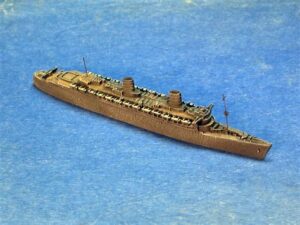 Canadian destroyer. The ship was recommissioned in June 1941 and renamed HMS Audacity in July,. The ship had its superstructure removed and replaced with a stem-to-stern, 475-foot flight deck.
Canadian destroyer. The ship was recommissioned in June 1941 and renamed HMS Audacity in July,. The ship had its superstructure removed and replaced with a stem-to-stern, 475-foot flight deck.
Once in service, Audacity and its half-dozen Wildcat fighters (called Martlets in the Royal Navy) proved to be so effective at protecting Mediterranean convoys that Nazi U-boat chief Admiral Karl Dönitz felt compelled to pay rueful tribute to the “continuous air umbrella” the ship maintained. Shortly after ferrying survivors of the sunken fleet carrier HMS Ark Royal, Audacity was torpedoed by a U-boat on the night of December 19. The skipper, Commander D W McKendrick, and 75 officers and men died.
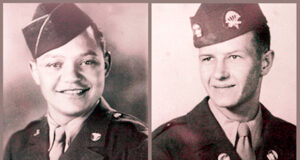 There were a number of events that took place on June 6, 1944, also known as D-Day. The areas of the Allied attack were miles away from each other. Early that morning, the Allies dropped thousands of allied paratroopers behind enemy lines in anticipation of the invasion of Normandy. It seems a strange idea to drop them behind enemy lines…like it was a big mistake. Nevertheless, one of the main objectives of the 101st Airborne was to capture the small village of Angoville-au-Plain. Then, when intense fighting broke out over the village, they dropped two American medics, Robert Wright and Kenneth Moore, in to set up a medical station in the tiny town
There were a number of events that took place on June 6, 1944, also known as D-Day. The areas of the Allied attack were miles away from each other. Early that morning, the Allies dropped thousands of allied paratroopers behind enemy lines in anticipation of the invasion of Normandy. It seems a strange idea to drop them behind enemy lines…like it was a big mistake. Nevertheless, one of the main objectives of the 101st Airborne was to capture the small village of Angoville-au-Plain. Then, when intense fighting broke out over the village, they dropped two American medics, Robert Wright and Kenneth Moore, in to set up a medical station in the tiny town 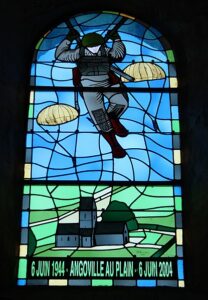 church. So, now they had not only had troops behind the lines, but they have medics…without guns behind the lines too.
church. So, now they had not only had troops behind the lines, but they have medics…without guns behind the lines too.
The plan to take over the village worked quickly and well. United States paratroopers established control of Angoville-au-Plain, but just as quickly, German units counterattacked and forced American troops back. Because of multiple injuries, Wright and Moore stayed behind. Suddenly they found themselves in danger when German soldiers entered the church. At first the German soldiers were hostile to the Americans, but then they realized that the medics were treating their wounded, as well the Allied wounded. The German troops could have attacked the men, and walked away without penalty, but instead, they left, posting a Red Cross flag at the entrance.
The fighting in the area raged on for three days, and the village changed hands several times, but the two medics never missed a beat. Over the course of the three days, they saved 80 lives, including a local teenager. The amazing part of the whole thing wasn’t just that they saved the lives, but also that the German soldiers didn’t kill them 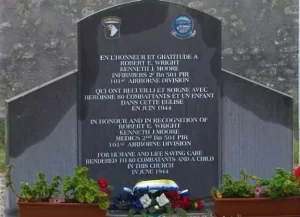 in the first place. I’m sure the medics thought that was an amazing thing. The little village of Angoville-au-Plain thought is was amazing too…not just the work of the medics, but also the work of the 101st Airborne. They thought it was amazing enough to make sure it was remembered
in the first place. I’m sure the medics thought that was an amazing thing. The little village of Angoville-au-Plain thought is was amazing too…not just the work of the medics, but also the work of the 101st Airborne. They thought it was amazing enough to make sure it was remembered
Today, all of the stained glass windows in the church (the originals were destroyed in the battle) are tributes to Wright, Moore, and the 101st Airborne. Wright visited the church in 2004, and some of his ashes were spread in Angoville-au-Plain’s cemetery as per his request, following his death on December 21, 2013. Moore passed away on December 7, 2014.
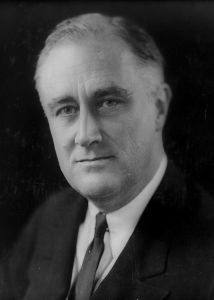 Most people believe that a there was always a two term limit on the office of the President of the United States, but that wasn’t always so. On November 5, 1940 Franklin D Roosevelt broke a long-held precedent, but not a law. The precedent was one that started with George Washington, when he became the first president elected to a third term. Roosevelt would go on to vie for, and win a fourth term, taking office again on January 20, 1945.
Most people believe that a there was always a two term limit on the office of the President of the United States, but that wasn’t always so. On November 5, 1940 Franklin D Roosevelt broke a long-held precedent, but not a law. The precedent was one that started with George Washington, when he became the first president elected to a third term. Roosevelt would go on to vie for, and win a fourth term, taking office again on January 20, 1945.
Roosevelt was the first president to win four terms, and the last president to win more than two consecutive presidential elections. His exclusive four terms were in part a consequence of timing. His election for a third term took place as the United States remained in the throws of the Great Depression and World War II had just begun. FDR (as he was known) was not the first president to try for multiple terms, but the instability of the times allowed him to make a strong case for stability…and how he, alone, could make that happen.
Says Barbara Perry, professor and director of presidential studies at the University of Virginia’s Miller Center, “You have economic-domestic issues and you have foreign policy with the outbreak of World War II in 1939. And then you have his own political viability—he had won the 1936 election with more than two-thirds of the popular vote.” It wasn’t that FDR’s policies were necessarily good for the country, and in fact, it is my opinion that most were disastrous, but since I was not born during FDR’s time in office, I suppose my only proof is history, and there are two sides to every story. All we can do is to look back at just how long it took to pull this nation out of the Great Depression, and draw our own conclusion from there. Anytime economic policies bring about big government, they hurt the American people.
The fact remains that any politician who is in office too long is a danger to this nation. I believe that we need to have term limits in every office there is. When a politician is in office too long, they begin to act like a dictator, and think that they don’t have to answer to anyone. Too much power in any one person’s hands creates greed and evil. Eventually, the United States lawmakers began to argue that term limits were necessary to keep abuse of power in check. FDR passed away on April 12, 1945, less than 3 months into his fourth term. Two years after FDR’s death, Congress passed the 22nd Amendment, limiting presidents to two terms. Then amendment was then ratified in 1951. At the time of FDR’s third presidential run, however, “There was nothing but precedent standing in his way, but, still, precedent, especially as it relates to the presidency, can be pretty powerful,” said Perry. A third consecutive run had been tried by other presidents, but they had failed. People really don’t want that.
The idea of needing term limits was not found among the framers of the Constitution, most of whom did not see the need. I’m sure they never considered man’s ability to be greedy and power-hungry, but Washington saw the importance, thus the precedent in not seeking re-election for a third time. Still, some had tried. 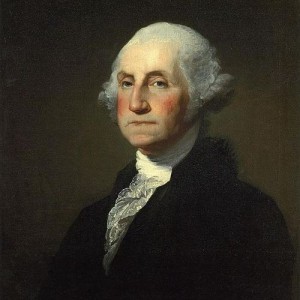 Ulysses S Grant lost a third campaign in 1880, when James Garfield clinched the Republican nomination. Theodore Roosevelt lost his bid at a third nonconsecutive term in 1912 to William Howard Taft (he had previously served out the remainder of President William McKinley’s term and then won reelection). And Woodrow Wilson lost the Democratic nomination in 1920. Harry Truman, who succeeded FDR after his death, was president when the 22nd Amendment passed and so was exempt from the new rule. Truman campaigned for a third term in 1952, but withdrew after losing in the New Hampshire primary. Roosevelt’s campaign for a third term took place as the United States had not yet entered World War II, and the president was still trying to hold the line in an isolationist pattern…another of his disastrous policies. And just one more reason to make term limits in all public offices mandatory.
Ulysses S Grant lost a third campaign in 1880, when James Garfield clinched the Republican nomination. Theodore Roosevelt lost his bid at a third nonconsecutive term in 1912 to William Howard Taft (he had previously served out the remainder of President William McKinley’s term and then won reelection). And Woodrow Wilson lost the Democratic nomination in 1920. Harry Truman, who succeeded FDR after his death, was president when the 22nd Amendment passed and so was exempt from the new rule. Truman campaigned for a third term in 1952, but withdrew after losing in the New Hampshire primary. Roosevelt’s campaign for a third term took place as the United States had not yet entered World War II, and the president was still trying to hold the line in an isolationist pattern…another of his disastrous policies. And just one more reason to make term limits in all public offices mandatory.
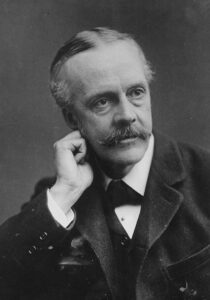 For a number of years Israel had no place to call home. That sounds like a strange thing, but for the nation of Israel, it was not a new thing. Biblical history tells us of a number of times that Israel’s God-given land was taken from them for a time, and they were taken into captivity. Even after the captivity the Jewish people were displaced from their promised land. They were also persecuted and subject to racial discrimination.
For a number of years Israel had no place to call home. That sounds like a strange thing, but for the nation of Israel, it was not a new thing. Biblical history tells us of a number of times that Israel’s God-given land was taken from them for a time, and they were taken into captivity. Even after the captivity the Jewish people were displaced from their promised land. They were also persecuted and subject to racial discrimination.
That began to change when on November 2, 1917, Foreign Secretary Arthur James Balfour wrote an important letter to Britain’s most illustrious Jewish citizen, Baron Lionel Walter Rothschild, expressing the British government’s support for a Jewish homeland in Palestine. I can only imagine how the Baron felt. This was like having someone offer you the moon. It was something the Jew never thought they would see again. Many didn’t think they would live long enough to see it. The letter would eventually become known as the Balfour Declaration, and it was the start of something good.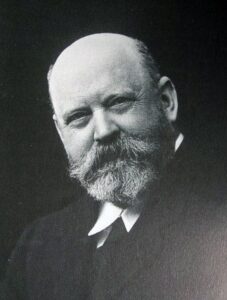
Because of concerns over the direction World War I was going, the British were very supportive of the Zionist movement. Lloyd George among others, held a genuine belief in the righteousness of Zionism, but Britain’s leaders also hoped that a statement supporting Zionism would help gain Jewish support for the Allies. On November 2, Balfour sent his letter to Baron Rothschild, who was a prominent Zionist and a friend of Chaim Weizmann, stating that: “His Majesty’s Government view with favor the establishment in Palestine of a national home for the Jewish people.”
The influence of the Balfour Declaration on the course of post-war events was immediate: According to the “mandate” system created by the Versailles Treaty of 1919, Britain was entrusted with the administration of Palestine, with the understanding that it would work on behalf of both its Jewish and Arab inhabitants. In 1948, the Balfour Declaration was scheduled to expire and Great Britain would no longer rule Palestine. The future of the Jewish people was at stake. The question over what to do with the 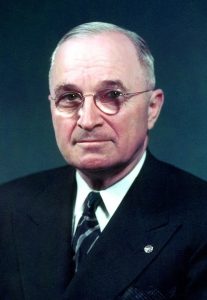 turbulent country was turned over to the United Nations. They, at the insistence of President Harry Truman, eventually decided to create the new country of Israel, specifically as a promised homeland for Jewish people. The new country was to be located across the various holy locations in which many events of the Old Testament occurred. The Jewish people were back in the promised land.
turbulent country was turned over to the United Nations. They, at the insistence of President Harry Truman, eventually decided to create the new country of Israel, specifically as a promised homeland for Jewish people. The new country was to be located across the various holy locations in which many events of the Old Testament occurred. The Jewish people were back in the promised land.
That was when United States President Harry Truman became the first world leader to officially recognize Israel as a legitimate Jewish state. On May 14, 1948, only eleven minutes after its creation the decree was delivered. His decision came after much discussion and advice from the White House staff, all of whom had differing viewpoints. Some advisors felt that creating a Jewish state was the only proper response to the Holocaust and would benefit American interests. Others took the opposite view, concerned about that the creation of a Jewish state would create more conflict in an already tumultuous region. No matter what happens, it was the right thing to do.
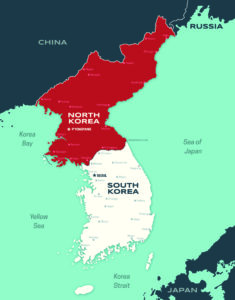 When the nations of North and South Korea were split, it was much like when Germany became East and West Germany…people were caught in the crossfire…so to speak. Despite being unified off and on for nearly 1,500 years, the Korean peninsula was divided into North and South as a result of the breakup of the Japanese empire at the end of World War II. The United States government knew that it would have to administer the Philippines, as well as Japan itself. It was a big job, so the United States was reluctant to also take trusteeship of Korea. Basically, Korea just wasn’t a very high priority for the United States. The Soviets, on the other hand, were more than willing to step in and take control of lands that the Tsar’s government had relinquished its claim to after the Russo-Japanese War (1904–05).
When the nations of North and South Korea were split, it was much like when Germany became East and West Germany…people were caught in the crossfire…so to speak. Despite being unified off and on for nearly 1,500 years, the Korean peninsula was divided into North and South as a result of the breakup of the Japanese empire at the end of World War II. The United States government knew that it would have to administer the Philippines, as well as Japan itself. It was a big job, so the United States was reluctant to also take trusteeship of Korea. Basically, Korea just wasn’t a very high priority for the United States. The Soviets, on the other hand, were more than willing to step in and take control of lands that the Tsar’s government had relinquished its claim to after the Russo-Japanese War (1904–05).
The Soviets wanted to set the country up as communist, and the United States wanted the country to be capitalist. The sad truth about the difference between communism and capitalism is that capitalism is about freedom, and communism is about slavery. The country was divided along the 38th parallel with a demilitarized zone along that line. The North Korean side of the 38th Parallel was ruled by communism, and the South was ruled by Capitalism. The economic impact was most unfortunate, in that two separate and “necessary to each other” industrial areas were now on  opposite sides. The two countries were now both poor.
opposite sides. The two countries were now both poor.
That was a sad state of affairs, but the worse state of affairs was what happened to the people. Communism being what is was, worried that if the people were allowed to cross the borders freely, they would not come back, and they were probably right. So the people who lived in North Korea and had family in South Korea were no separated from each other, and those in the south were equally separated from loved ones. It is a horrible situation, but there seemed to be no remedy for it. The separation went on for many years. Finally on October 31, 2010, the North Korean government relented to a degree. Four hundred and thirty-six South Koreans were allowed to spend three days in North Korea to meet their 97 North Korean relatives, whom they had been separated from since the 1950-1953 war. The three-day reunion was wonderful, but also bittersweet, because it was followed by a sad goodbye. The separation had been excruciating, and they had no recourse. They were at 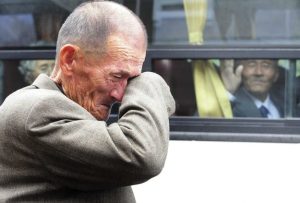 the mercy of the ruling government. Nevertheless, they were also thankful for the time to spend together, even if it meant a tearful goodbye following a luncheon meeting during inter-Korean temporary family reunions at Mount Kumgang resort.
the mercy of the ruling government. Nevertheless, they were also thankful for the time to spend together, even if it meant a tearful goodbye following a luncheon meeting during inter-Korean temporary family reunions at Mount Kumgang resort.
When you look at the realities of Socialism, Marxism, and Communism, you cannot really be surprised by the many people who are trying to escape from it’s grip. Most are willing to give their life to get out in the hope of giving their children a better life than that. Many lessons could be learned from the situation between North and South Korea, if we will only pay attention.
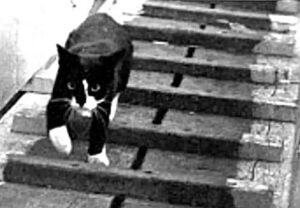
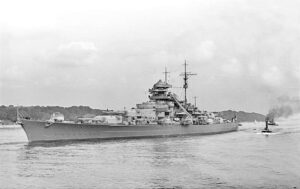 Animals have been used in most wars for different purposes. Some animals were messengers, like the carrier pigeon. Some were for warning, like the dog, which also served as a soldier in a fight situation. They are very loyal, and will do their best to save their master. These types of animals were to be expected to a degree, but during World War II, there was a certain cat, named Oscar, also known as Oskar, and ultimately known as Unsinkable Sam, because this cat managed not only to serve in both the Kriegsmarine, but also the Royal Navy. The cat’s original name is unknown, but the name “Oscar” was given by the crew of the British destroyer HMS Cossack, when that crew rescued him from the sea following the sinking of the German battleship Bismarck. The name “Oscar” was given to the cat, and was derived from the International Code of Signals for the letter ‘O’ which is code for “Man Overboard” (the German spelling “Oskar” was sometimes used since he was a German cat). For Oscar to survive the sinking of the Bismarck was amazing, but it was not the end of his story.
Animals have been used in most wars for different purposes. Some animals were messengers, like the carrier pigeon. Some were for warning, like the dog, which also served as a soldier in a fight situation. They are very loyal, and will do their best to save their master. These types of animals were to be expected to a degree, but during World War II, there was a certain cat, named Oscar, also known as Oskar, and ultimately known as Unsinkable Sam, because this cat managed not only to serve in both the Kriegsmarine, but also the Royal Navy. The cat’s original name is unknown, but the name “Oscar” was given by the crew of the British destroyer HMS Cossack, when that crew rescued him from the sea following the sinking of the German battleship Bismarck. The name “Oscar” was given to the cat, and was derived from the International Code of Signals for the letter ‘O’ which is code for “Man Overboard” (the German spelling “Oskar” was sometimes used since he was a German cat). For Oscar to survive the sinking of the Bismarck was amazing, but it was not the end of his story.
As you know, war is a tough time to be on a ship. There is no guarantee that the ship will make it through the war, and if a ship goes down in a battle, it usually takes some, if not all of the crew with it. A cat would usually have little chance of survival on a ship that is sinking, but someone forgot to tell Oskar that. Oskar was a black and white patched cat. It is thought that he was originally owned by one of the crewman of the German battleship Bismarck and was on board the ship on May 18, 1941 when the ship set sail on Operation Rheinübung (German for Rhine Exercise). It was the Bismarck’s only mission. On May 27, 1941, the Bismarck was sunk after a fierce sea-battle. The sinking took with it most of the crew. Out of a crew of 2,100 men, only 115 from her crew survived…and one cat. Hours after the sinking, Oscar was found floating on a board and picked from the water by the British destroyer HMS Cossack.
The crew of the Cossack decided that since Oscar was used to being on a ship, he could just stay with them. So, Oscar “served” on board Cossack for the next few months as the ship carried out convoy escort duties in the Mediterranean Sea and north Atlantic Ocean. On October 24, 1941, Cossack was escorting a convoy from Gibraltar to Great Britain when she was severely damaged by a torpedo fired by the German submarine U-563. The surviving crew were transferred to the destroyer HMS Legion, and an attempt was made to tow the badly listing Cossack back to Gibraltar. Unfortunately, the weather was not cooperative, and as it worsened, the task became impossible and had to be abandoned. On October 27, a day after the tow was slipped, Cossack sank to the west of Gibraltar. The initial explosion had blown off one third of the forward section of the ship, killing 159 of the crew, but Oscar survived, and was taken to Gibraltar. To say that a cat has nine lives is almost an understatement when it came to Oscar.
Following the sinking of Cossack, Oscar was given the nickname “Unsinkable Sam” and was soon transferred to the aircraft carrier HMS Ark Royal, which by coincidence was instrumental in the destruction of Bismarck, along with Cossack. This assignment was not going to prove safer for Sam, and one might begin to wonder if he should be given another shore assignment…for the sake of the ships. When the Ark Royal was returning from Malta on November 14, 1941, it too was torpedoed, this time by U-81. Again they attempted to tow Ark Royal to Gibraltar, but they were unable to stop the inflow of water, so the attempt was futile. The carrier rolled over and sank 30 miles from Gibraltar. The good news was that due to the slow rate of the sinking, all but one crew member were able to be evacuated, along with, of course, Unsinkable Sam. The survivors, including Sam, who had been found clinging to a floating plank by a Motor Launch and described as “angry but quite unharmed,” were transferred to HMS Lightning and the same HMS Legion which had also rescued the crew of Cossack. Legion would itself be sunk in 1942, and Lightning in 1943. The life of a ship in wartime was not a safe one.
After the third ship sank under Sam’s paws, it was decided that maybe he shouldn’t be on a ship, so he was transferred first to the offices of the Governor of Gibraltar and then sent back to the United Kingdom, where he saw out the remainder of the war living in a seaman’s home in Belfast called the “Home for Sailors.” I think Sam had earned his place there. Sam died in 1955. A pastel portrait of Sam, which was titled “Oscar, the Bismarck’s Cat” by the artist Georgina Shaw-Baker is on display in the National Maritime Museum in Greenwich.
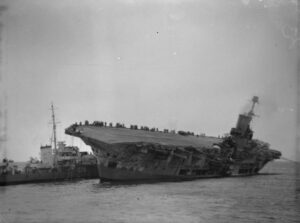
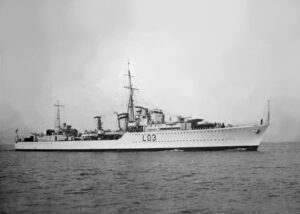
Of course, as with all war stories, some authorities question whether Oskar/Sam’s biography might be a “sea story,” because for example, there are pictures of two different cats identified as Oskar/Sam. It is my opinion that whether it is true or not, it lends a lighthearted note to the otherwise tragic stories of war, and therefore, I choose to believe it is true.

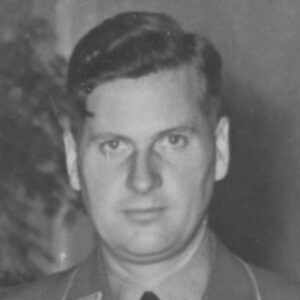 I read a story about training an elephant yesterday. It went like this, “As a man was passing the elephants, he suddenly stopped, confused by the fact that these huge creatures were being held by only a small rope tied to their front leg. No chains, no cages. It was obvious that the elephants could, at anytime, break away from their bonds but for some reason, they did not.
I read a story about training an elephant yesterday. It went like this, “As a man was passing the elephants, he suddenly stopped, confused by the fact that these huge creatures were being held by only a small rope tied to their front leg. No chains, no cages. It was obvious that the elephants could, at anytime, break away from their bonds but for some reason, they did not.
He saw a trainer nearby and asked why these animals just stood there and made no attempt to get away. ‘Well,’ trainer said, ‘when they are very young and much smaller we use the same size rope to tie them and, at that age, it’s enough to hold them. As they grow up, they are conditioned to believe they cannot break away. They believe the rope can still hold them, so they never try to break free.’
The man was amazed. These animals could at any time break free from their bonds, but because they believed they couldn’t, they were stuck right where they were.”
The story made me think about the way Hitler was able to train a generation to follow him without question. He took the children away from their parents when they were young, basically telling the parents that the state knew what was best for the children, and the parents didn’t know enough about educating the children to do a good job. He set up the Hitler Youth organization in 1933 for educating and training male youth in principles. Of course, the principles Hitler had in mind were vastly different from any that the parents could imagine. Hitler’s ideas included racism, killing any “undesirables” among the population, and controlling the people with curfews and lockdowns…to name a few. Under the leadership of Baldur Benedikt von Schirach, the head of all German youth programs, the Hitler Youth included by 1935 almost 60 percent of German boys. On July 1, 1936, it became a state agency that all young “Aryan” Germans were expected to join. Upon reaching his 10th birthday, a German boy was registered and investigated especially for “racial purity” and, if qualified, inducted into the “German Young People.” At age 13 the youth became eligible for the Hitler Youth, from which he was graduated at age 18. Throughout these years he lived a life of dedication, fellowship, and Nazi conformity, generally with minimum parental guidance. From age 18 he was a member of and served in the state labor service and the armed forces until at least the age of 21.
Two leagues also existed for girls. The League of German Girls trained girls ages 14 to 18 for comradeship, domestic duties, and motherhood. “Young Girls” was an organization for girls ages 10 to 14. The girls were expected to have babies to build the Reich…provided they qualified as “racially pure,” of course.
In the tumultuous days we currently live in, parents need to be very involved in what our children are being taught. The current racially charged climate in our nation would only be exacerbated by teaching our children things like Critical Race Theory, because it is really the new Ku Klux Klan. Racism, against any nationality is simply wrong…there is no gray area. Our children need to be able to be proud of the race they are and the background they come from. Racism is unacceptable, against any race, and we, as parents, grandparents, and 
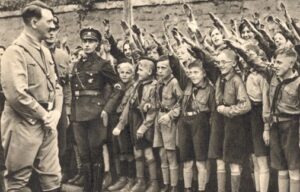 even great grandparents, need to kick the government out of our educational system, and get back to decent moral values. We need to stop the insanity in our schools, and teach our kids the true history of our nation. We must teach good values, and our children need to be taught to accept all races. We need to start with the kids, because they are the future leaders.
even great grandparents, need to kick the government out of our educational system, and get back to decent moral values. We need to stop the insanity in our schools, and teach our kids the true history of our nation. We must teach good values, and our children need to be taught to accept all races. We need to start with the kids, because they are the future leaders.
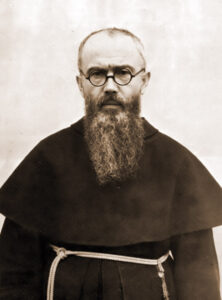 Heroes come from all walks of life, and you really never know who will become a hero and who won’t. In fact, I don’t think a hero even knows that the heroic in inside him, until the heroic is needed. Often the heroic comes from being faced with a situation that would require your life to save that of another. Such was the case for Maximilian Kolbe in 1941.
Heroes come from all walks of life, and you really never know who will become a hero and who won’t. In fact, I don’t think a hero even knows that the heroic in inside him, until the heroic is needed. Often the heroic comes from being faced with a situation that would require your life to save that of another. Such was the case for Maximilian Kolbe in 1941.
The Catholics didn’t really agree with the Jewish beliefs, and the Jews felt the same way about the Catholics beliefs, so when Hitler began rounding up the Jews, many Catholics and other religions, were quick to turn them over…it might have been to save their own lives, but they were handing them over to be killed, nevertheless…and they knew it. The non-Jews could pretend that everything was fine and the Jewish people who were taken, would be returned when things settled down, and maybe at first they truly thought that, but as time went by the truth was coming out. They now had a choice to make…a moral choice.
Kolbe was a Catholic priest during World War II. He saw what was going on with the Jewish people, when Hitler started rounding them up. Kolbe could read between the lines, as many people could in those horrific days, and he decided to help Jewish people escape the Nazis. Being a Catholic priest, he likely had more room that other 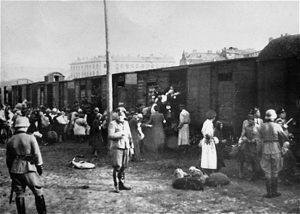 people might have had. He started harboring Jewish people and hiding them from the Nazis, keeping them safe from the public and any harm that might be afflicted upon them. As with many people who harbored Jews, Kolbe was soon caught, and was sent to Auschwitz for sheltering Jewish people.
people might have had. He started harboring Jewish people and hiding them from the Nazis, keeping them safe from the public and any harm that might be afflicted upon them. As with many people who harbored Jews, Kolbe was soon caught, and was sent to Auschwitz for sheltering Jewish people.
Auschwitz was one of the worst of Hitler’s torture chamber death camps, and it certainly proved to be just that for Kolbe. During his time at the horrid concentration camp, a prisoner escaped from the camp and as punishment, ten innocent prisoners had to starve to death in a hollow, concrete tube. One of the elected people started to cry and exclaimed that they had a wife and kids, so Kolbe spoke up and took his place so the man could be with this family. The prisoners were kept in the tube for the next two weeks. Most of them were already in a weakened and starved state, and so the prisoners inside the tube slowly began to die. Of the ten prisoners, Kolbe and 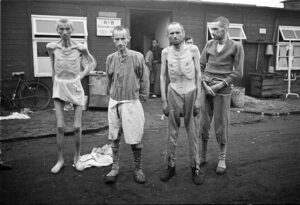 three other men managed to survive the torturous tube. One would think that if they survived the tube, they would be considered strong enough to bring out and put back to work, but the remaining prisoners were brought out of the tube and killed by being injected with Carbolic Acid. When it was his turn to receive the injection, Kolbe didn’t fight like the rest of the men, but instead, he gave his arm to the prison guard and never once made a fuss over it. One might think that Kolbe was just done with the whole mess, and maybe that was true, but it would have made no difference for him to fight. The guards had decided, and his fighting the injection would make no difference. Maximilian Kolbe died on August 14, 1941. He was 47 years old.
three other men managed to survive the torturous tube. One would think that if they survived the tube, they would be considered strong enough to bring out and put back to work, but the remaining prisoners were brought out of the tube and killed by being injected with Carbolic Acid. When it was his turn to receive the injection, Kolbe didn’t fight like the rest of the men, but instead, he gave his arm to the prison guard and never once made a fuss over it. One might think that Kolbe was just done with the whole mess, and maybe that was true, but it would have made no difference for him to fight. The guards had decided, and his fighting the injection would make no difference. Maximilian Kolbe died on August 14, 1941. He was 47 years old.
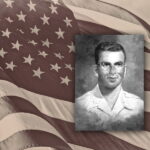 It’s hard to picture a dentist as being a hero, but US Army Medic Ben Salomon, who was a dentist before he was drafted in to the US Army as a private in 1940, as World War II was in its early stages. Salomon was assigned, not to the medical units, but rather, to the infantry. It was in the infantry during rifle and pistol qualifications that Salomon was rated an Expert Marksman. He also had medical knowledge that could be used during battlefield surgery. Salomon was assigned to a unit as their medic. Being a medic in wartime means that you are doing the noble thing, a task which is not often recognized as anything special. I think was have all seen the television show, MASH, in which the position of Army Doctor is viewed as mostly safe, far from the front lines, and given to a little bit of hanky panky. It doesn’t often paint a picture of heroic actions, although, sometimes the doctors are heroic (Nevertheless, I don’t mean to say that all military doctors are like the doctors on MASH, who are, after all, playing a part.) Medics serve and protect like every other serviceman, but they sometimes see a lot more of war’s ugly side. These unit medics might saw torn apart friends, horrific injuries, and a lot of deaths. The men they served with every day were their friends, and while the medic was usually behind the unit in a tent, caring for the wounded, these were not strangers to them. They were friends and comrades in arms.
It’s hard to picture a dentist as being a hero, but US Army Medic Ben Salomon, who was a dentist before he was drafted in to the US Army as a private in 1940, as World War II was in its early stages. Salomon was assigned, not to the medical units, but rather, to the infantry. It was in the infantry during rifle and pistol qualifications that Salomon was rated an Expert Marksman. He also had medical knowledge that could be used during battlefield surgery. Salomon was assigned to a unit as their medic. Being a medic in wartime means that you are doing the noble thing, a task which is not often recognized as anything special. I think was have all seen the television show, MASH, in which the position of Army Doctor is viewed as mostly safe, far from the front lines, and given to a little bit of hanky panky. It doesn’t often paint a picture of heroic actions, although, sometimes the doctors are heroic (Nevertheless, I don’t mean to say that all military doctors are like the doctors on MASH, who are, after all, playing a part.) Medics serve and protect like every other serviceman, but they sometimes see a lot more of war’s ugly side. These unit medics might saw torn apart friends, horrific injuries, and a lot of deaths. The men they served with every day were their friends, and while the medic was usually behind the unit in a tent, caring for the wounded, these were not strangers to them. They were friends and comrades in arms.
Just one month after Salomon’s promotion to captain, he experienced his first battle. Salomon volunteered to replace the 2nd Battalion, 105th Infantry Regiment’s field surgeon, who had been wounded. The unit was sent to Saipan to fight the Japanese forces. Little did Salomon know that this would be his only battle. When the unit landed in Saipan, they found immediately themselves in one of the most intense fights in the Pacific arena. Apparently this little island had been determined to be vital…no matter which side you were on. The Japanese army was not willing to concede the island and the US Army was adamant that they needed to take it. By the time Salomon’s unit arrived, the Japanese had taken the approach of advance and attack to their own deaths.
The tents for the field surgeons were located 50 yards behind the front, and it was there that Salomon worked to triage the severely wounded men. On July 6, 1944, the Japanese reached the trenches and Salomon’s position. Then on July 7th, the Japanese made it over the trenches and went straight to the medical tents. Inside, Salomon was treating wounded soldiers. He looked up and saw a Japanese soldier storm into the tent and bayonet one of the wounded and unarmed soldiers. Solomon acted instinctively. He grabbed an M1 rifle which was on a table close by and fired, killing the enemy soldier. For a medic, who never expected to need to fire his weapon, that situation must have come as a bit of a shock, but that soldier was not to be the only one Salomon killed that day. He turned back to the wounded soldiers, and then he saw two more enemy soldiers burst into the tent. There wasn’t much room in the tents, and they weren’t designed for hand to hand combat, but the tent soon became the battlefield, nevertheless. Salomon began swinging the rifle and clubbed the first soldier, then jamming the second with the butt of the weapon. Then, he shot one and bayoneted the other.
Immediately, four more Japanese soldiers made their way into the medical tent and tried to catch Salomon by surprise. One of the soldiers had a knife that Salomon kicked out of his hand before firing his rifle, killing one soldier and using his bayonet to kill another. By now, Salomon was out of bullets, so he picked up the knife and engaged with the two remaining enemy fighters. He killed one using the knife before head-butting the other, who was then shot by one of the patients in the tent. After dispatching the enemy soldiers, Salomon ordered his colleagues to evacuate the wounded. He would stay behind to hold off the enemy to give them the extra time they needed. As Captain Salomon loaded his rifle, the 30 wounded soldiers and orderlies in the tent started to retreat. The decision to stay and fight while the wounded were evacuated saved many lives, but Salomon was now in a battle that he had no hope of winning, much less living through. Ben Salomon made his last stand. He commandeered a heavy machine gun and was last seen firing at oncoming Japanese troops.
When the American troops were finally able to return to the area, they found Salomon’s body slumped over the machine gun, surrounded by the bodies of 98 Japanese soldiers. He had been shot 76 times and had 24 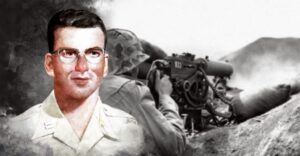 bayonet wounds on his body. Yes, Captain Salomon had died in the battle, but not before he killed 98 enemy soldiers, and the wounded soldiers and the medics with him had all managed to escape. Salomon was a serious force to be reckoned with, as the Japanese found out that day.
bayonet wounds on his body. Yes, Captain Salomon had died in the battle, but not before he killed 98 enemy soldiers, and the wounded soldiers and the medics with him had all managed to escape. Salomon was a serious force to be reckoned with, as the Japanese found out that day.
Medical personnel were considered ineligible for the Medal of Honor at that time, due to the terms of the Geneva Convention, so the request that he be awarded the medal was denied. After numerous other attempts over the years, Salomon’s bravery was finally recognized with the Medal of Honor in 2002, 58 years after his death.

